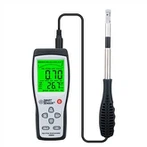Wiping of microscope optical system
Usually, clean the surface of each optical part of the microscope with a clean brush or wipe it clean with lens wiping paper. When there are stains, oil stains, or fingerprints on the lens that cannot be wiped off, when the lens is moldy, foggy, or reused after long-term use, it is necessary to wipe it before use.
(1) The eyepiece and spotlight are allowed to be removed for wiping. Due to the complex structure of the objective lens, specialized instruments are required for calibration during assembly to restore its original accuracy. Therefore, it is strictly prohibited to disassemble and wipe it.
When disassembling the eyepiece and spotlight, pay attention to the following points:
a, Be careful and cautious.
b, When disassembling, it is necessary to mark the relative position of each component (marking can be made on the shell), relative order, and the front and back of the lens to prevent mistakes during reassembly.
c, The operating environment should be kept clean and dry. When disassembling the eyepiece, simply unscrew the upper and lower lenses from both ends. The field of view light bar inside the eyepiece cannot be moved. Otherwise, it will blur the field of view boundary. It is strictly prohibited to further disassemble the lens on the condenser after it is loosened. Due to the oil immersed lens on it, it undergoes good sealing when leaving the factory, and decomposition will damage its sealing performance and cause damage.
2. Wiping method: First, use a clean brush or hair dryer to remove dust from the surface of the lens. Then use a clean velvet cloth to make a spiral unidirectional movement from the center of the lens towards the edge. After wiping, change the velvet cloth to a different place and wipe it again until it is completely wiped clean. If there are oil stains, dirt, or fingerprints on the lens that cannot be wiped off, you can use willow twigs wrapped in degreased cotton, dipped in a small amount of alcohol and ether mixture (80% alcohol, 20% ether) to wipe. If there are heavy mold spots or spots that cannot be removed, you can use a cotton swab dipped in water to moisten and stick calcium carbonate powder (with a content of over 99%) for wiping. After wiping, the powder should be removed thoroughly. Whether the lenses are wiped clean can be observed and checked by the reflected light on the lenses. It should be noted that the dust must be removed before wiping. Otherwise, the sand particles in the dust will create grooves on the mirror surface. Do not use towels, handkerchiefs, clothes, etc. to wipe the lenses. Do not use too much alcohol ether mixture to prevent the liquid from entering the adhesive part of the lens and causing the lens to peel off. There is a layer of purple blue transparent film on the surface of the lens, do not mistake it for dirt to wipe it off.
3. Wiping of mechanical parts
The painted surface can be wiped with a cloth. But organic solvents such as alcohol and ether should not be used to wipe to prevent paint peeling. If there is rust on the unpainted part, it can be wiped off with a cloth dipped in gasoline. After wiping, reapply protective grease.






